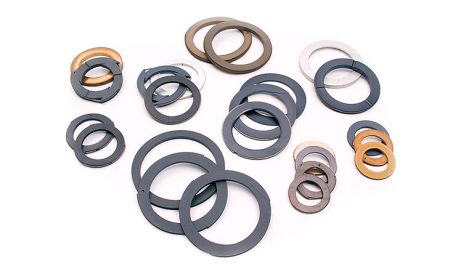If you’ve ever received an invoice with multiple copies, it was likely printed on carbonless paper. Businesses commonly use carbonless forms for invoices, sales orders, and credit applications. Because these forms need to be easily duplicated and securely destroyed once they’re filled out, they are the perfect option for many situations requiring multiple copies of documents you need to keep track of.
What are Carbonless Forms?
Carbonless paper is a pressure-sensitive paper coated with micro-encapsulated dye or ink. When pressure is applied, the dye is released and transferred to the next sheet of paper, creating a copy without carbon paper. Carbonless paper comes in wide different varieties, but the most common type is 3 part carbonless paper. This paper has a white top sheet, a canary second sheet, and a pink third. When pressure is applied to the top sheet, the dye is released and transferred to the second and third sheets, creating two copies of the original document.
Where do they come from?
Most people don’t know where their 3 part carbonless paper comes from. It’s a fascinating process that begins with a tree. To make 3 part carbonless paper, we use hardwood and softwood trees as raw materials. The wood is harvested and then processed into chips or pulp by grinding or chipping it into small pieces.
The chips are boiled in water to separate the fibers and produce lignin, a yellow substance used to make various items such as plastics, detergents, pesticides, herbicides, synthetic rubber, and furniture polish. The cellulose is treated with strong alkali (i.e., sodium hydroxide) to dissolve the lignin cells; this removes them so they can be filtered out later in making 3-part carbonless paper.
What makes them green and eco-friendly?
Carbonless forms, also known as no carbon required (NCR) forms, are lightweight paper with a special coating. This coating is chemically treated to be reactive to pressure. When pressure is applied, the top layer transfers the pressure to the next sheet below it, creating a copy of the original document. The carbonless paper doesn’t need chemicals or processes to create copies, so it’s much more eco-friendly than traditional carbon paper.
Are there any alternatives to Carbonless Forms
While Carbonless Forms are the most popular copy paper type, a few alternatives are available. Thermography, a raised printing process, can be used to create multi-part forms. Another option is to use pressure-sensitive paper, which can be used in laser or inkjet printers. Finally, you could also use non-carbonated paper, which is available in both pre-printed and plain varieties.
What is carbonless paper made of?
Carbonless paper is a chemically treated sheet that transfers an image when pressure is applied. It’s often used in multi-part forms, so a copy can be made without needing a separate piece of paper. The bottom layer is usually a bit heavier than the top layer, and a micro-perforated adhesive separates the two. When pressure is applied, the top layer transfers the ink to the bottom layer, creating a copy. Carbonless paper can be recycled just like regular paper.
Do you need a special printer for carbonless paper?
No, you don’t need a special printer for carbonless paper. Any office printer will do. Carbonless paper is made with a coating that reacts with pressure and heat to create copies. The bottom layer is coated with micro-encapsulated dye that breaks when pressure is applied, releasing the dye onto the page below. The top layer has a clay coating that transfers the image from the bottom layer when heat and pressure are applied.
Conclusion
To understand how carbonless forms are made, it is first important to know a little bit about the history of copy paper. Copy paper was created in 1774 by Nicholas-Jacques Conte. The original process for making copy paper involved using a lead and acid mixture. This mixture would be applied to a piece of paper, then placed on top of another. The lead and acid would react, causing the top piece of paper to become black.





